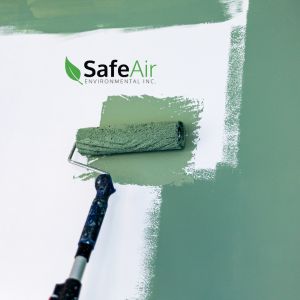What Chemicals Affect Indoor Air Quality
Posted in Air Quality, on October 17, 2023
What’s in the air you breathe? Unless you’ve had air quality testing in Toronto or notice a strange smell, you might think everything is A-OK at home. But at SafeAir, we find that home air quality is a lot more complicated than what your nose detects. How we use our homes and the things we bring into or put on it can affect our indoor air environment, causing small pockets of pollution or allergens that affect our daily lives. Having environmental testing in Toronto with SafeAir can help you identify these problems and find a solution. Are you curious about what could be in your home?
Here are 6 of the most common chemicals affecting indoor air quality.
Benzene
 If you’ve recently installed new carpets or done some home improvement, you may have used glues or paints that emit benzene, a chemical that can cause drowsiness, headaches, and an increased heart rate in high doses.
If you’ve recently installed new carpets or done some home improvement, you may have used glues or paints that emit benzene, a chemical that can cause drowsiness, headaches, and an increased heart rate in high doses.
Formaldehyde
Also found in glues and paints, formaldehyde is a preservative used in many everyday household objects like wallpaper, cardboard, and varnishes.
Artificial Fragrances
Plug-ins and scented home products may give you the illusion of cleanliness or freshness, but many contain harmful chemicals that irritate the eyes or respiratory system.
Dichlorobenzene and Parachlorobenzene
These related substances are used as insecticides to control household pests (such as clothes moths) and may also be found in deodorants used in trash cans and bathrooms.
Acetone
When you remove your nail polish, that sharp smell may be acetone, a harsh chemical that helps strip surfaces. Look for acetone-free nail polish remover to protect your lungs.
Perchloroethylene
This chemical is commonly used in dry cleaning and may off-gas from your clothes after you bring them home and start wearing them. We suggest airing your clothes before putting them away or speaking to your dry-cleaning shop to learn more.
What are VOCs?
The six chemicals we shared above may also be known as Volatile Organic Compounds or VOCs. This label means they are emitted as a gas from certain solid or liquid materials — for example, paint, varnish, or cleaning supplies. VOCs are everywhere in nature, and not all are bad — the lovely smell of lemon zest, for example, is a VOC! But they can start to affect your health indoors, where they tend to concentrate because there is less airflow.
Why Should I Be Concerned About VOCs?
By their nature, VOCs are airborne, so they are very easy to breathe in. If they are toxic or unhealthy, this can cause symptoms like:
- Irritation to the eyes, nose, or throat.
- Respiratory effects.
- Headaches.
- Nausea.
High concentrations of VOCs may cause organ damage or more severe effects that require medical attention, and many are known carcinogens. The good news is that VOCs are easy to detect during air quality testing in Toronto. At SafeAir, we test for dozens of chemicals, allergens, and particles that affect home air quality, and also offer specialized testing that looks for mold, radon gas, asbestos, or other dangerous indoor pollutants. Learn more about VOCs or book environmental testing in Toronto by contacting the SafeAir team today.

